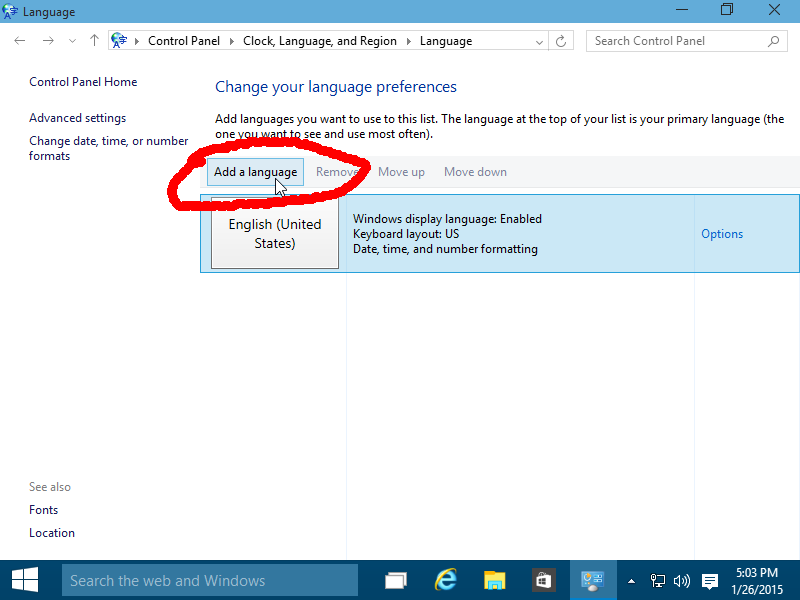Summary

Starting with Windows 10 1803, Microsoft has begun to replace language packs (LPs) in.cab format with Local Experience Packs (LXPs). You can also add these AppX packages via the store. They will change language management fundamentally for admins. Only Windows Server 2019 will keep.cab files for the time being. If Language Packs won’t install then this post will show you how to correctly install and uninstall languages in Windows 10. Add or Install Language on Windows 10. Open the Settings app Time.
Windows 10 Install Language Pack Powershell
Language packs and language interface language packs (LIPs) are available for devices that are running Windows 10 Version 1511 and can be installed by using the Language Control Panel.
More Information
For a list of language packs that are available for Windows 10 Version 1511, see Language packs.
Device manufacturers can find details about deployment options for language packs at Add Language Packs to Windows.
To reduce disk space requirements in Windows 10 and improve installation time, language packs have been split into language components and Features on Demand v2 (Capabilities). Language components include the user interface text for that language and basic Cortana capabilities. Other language features, including spell checking, text prediction, word breaking, hyphenation, fonts, optical character recognition, handwriting recognition, text-to-speech, and speech recognition are installed as needed using Features on Demand v2 (Capabilities). Device manufacturers can find details for deployment options at Features On Demand V2 (Capabilities).
Language interface packs include Windows user interface text for a region, and can provide a better experience in countries or regions where two languages are commonly used. LIPs require at least one language pack (or parent language) to install. For example, the Catalan (ca-ES) language interface pack can be installed only if one of the following languages is already installed: English US (en-US), Great Britain (en-GB), Spanish (es-ES), or French (fr-FR).
For a list of the LIPs and their parent languages, see Available Language Packs for Windows.
Windows 10 Install Language Packages
Normally, if you add a new language to Windows 10, it will tell whether a Language Pack is available, and if so, it will give you an option to install it.

If you don't see this option, you can install the Language Pack manually.

First of all you need to obtain a language .cab file for correct Windows 10 version. If you have an MSDN subscription, you can download full Microsoft Language Pack ISO image directly from there. If you don't have MSDN, you can find this file online after a bit of searching. If you need English (United States) language pack for Windows 10 RTM 64bit (for example to install RSAT), you can download it from here.
Once you have the right .cab file, process is pretty simple:

- Start > Run type lpksetup and press Enter
- Follow a simple wizard, select your language .cab file, and restart the PC when prompted
August 2015
Windows 10 Pro 64bit
